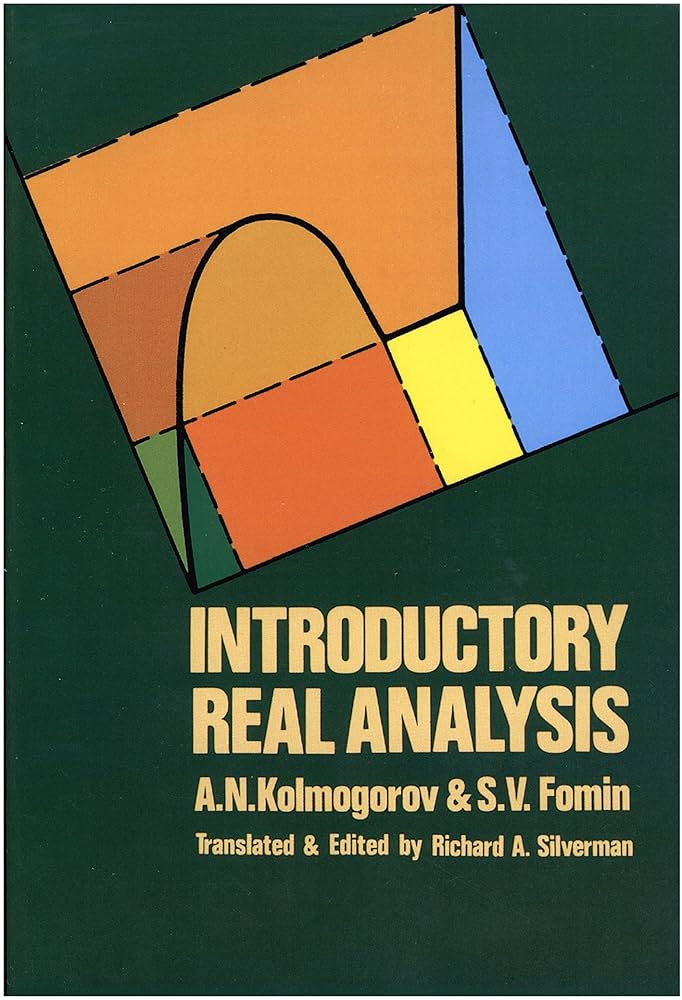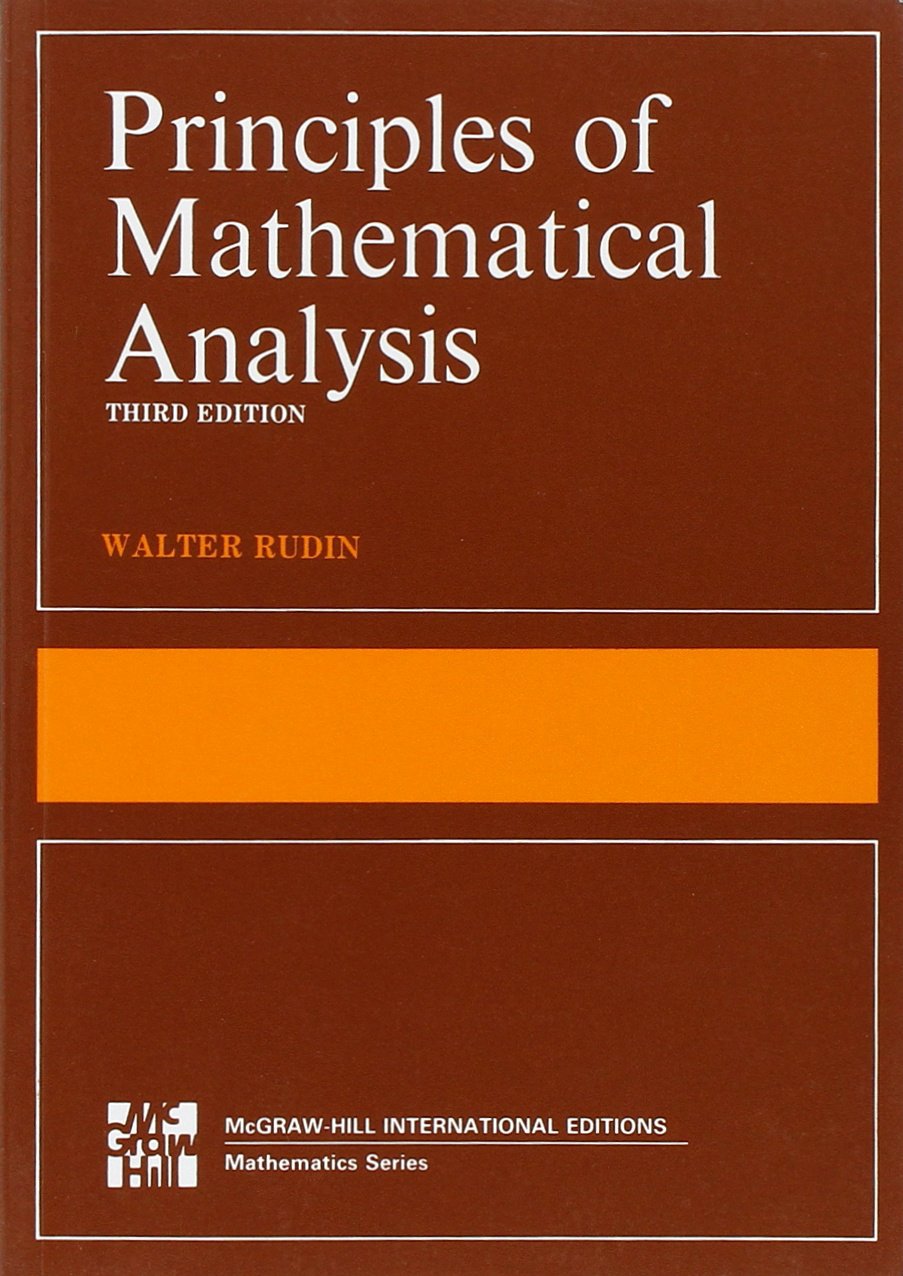Real Analysis
I am finding Real Analysis to be more difficult than any other mathematics that I have studied before. I can seem to verify the truth of statements because they seem right; but I am having a difficult time producing rigorous and correct proofs.
It seems that High-School children (on the internet) are able to self-study Fomin with success. Bitterly, we remind ourselves:
"Comparison is the thief of Joy"—Theodore Roosevelt (probably)
Exercises
Results
Set Theory
We say that two sets $A$ and $B$ have the same cardinality if there is a bijection $f: A\rightarrow B$; we then write $A\sim B$, which is the same as $|A| = |B|$.
Also, if there is an injective function $f:A\rightarrow B$, we say $|A|\leq |B|$. Or, equivalently, a surjection from $f: B\rightarrow A$.
Metric Spaces
A metric space is a pair $(X,d)$, where $X$ is a (non-empty) set and $d: X \times X \rightarrow [0,\infty)$ is a function, such that the following conditions hold for all $x,y,z \in X$:
- $d(x,y) = 0 \iff x=y$
- $d(x,y) = d(y,x)$
- $d(x,y) + d(y,z) \geq d(x,z)\quad$ (triangle inequality)
Let $(X,d)$ be a metric space, and consider $Y\subseteq X$. Define the interior \[\mathrm{Int}(Y) = \set{y \in Y: \exists \epsilon > 0\text{ such that }B(y,\epsilon)\subseteq Y} \]
Define the boundary: \[\mathrm{Bd}(Y) = X \backslash (\mathrm{Int}(Y)\cup \mathrm{Int}(Y^c))\]
Let $(X,d)$ be a metric space. The topology has the following properties:
- $\varnothing, X \in \mathcal{O}(X)$
- If $\set{V_i}_{i\in I} \subseteq \mathcal{O}(X)$, then $\displaystyle \bigcup_{i\in I} V_i \in \mathcal{O}(X)$. 𐃏
- If $V_1, V_2 \in \mathcal{O}(X)$, then $V_1 \cap V_2 \in \mathcal{O}(X)$ 𐃏
Let $(X,d)$ be a metric space and $\varnothing\ne Y\subseteq X$. The following statements are equivalent:
- $\forall x\in X$ there exists $R(x)>0$ with $Y\subseteq B(x,R(x))$;
- $\exists\,y\in Y$ and $R>0$ with $Y\subseteq B(y,R)$;
- $\exists\,R>0$ such that $d(y_1,y_2)<R$ for every $y_1,y_2\in Y$.
Let $(X,d)$ be any metric space.
- $(\overline X,\overline d)$ is complete.
- The embedding $i:X\to\overline X$, $x\mapsto$ constant sequence $[x,x,\dots]$, is an isometry and $i(X)$ is dense in $\overline X$.
- The completion is unique: if $j:X\to Y$ is an isometric embedding into a complete $Y$ with dense image, then there is a unique bijective isometry $f:Y\to\overline X$ satisfying $f\circ j=i$.
For a vector space $V$ (over $\mathbb R$ or $\mathbb C$), a norm is a map \[ \|\cdot\|:V\to[0,\infty) \] such that for all $x,y\in V$ and $\lambda\in\mathbb R\text{ or }\mathbb C$:
- $\|x\|=0\iff x=0$;
- $\|\lambda x\|=|\lambda|\,\|x\|$;
- $\|x+y\|\le\|x\|+\|y\|$.
An inner product space is a vector space $V$ together with $\langle\cdot,\cdot\rangle:V\times V\to\mathbb R\text{ or }\mathbb C$ satisfying
- $\langle x,x\rangle>0$ for $x\ne0$;
- $\langle x,y\rangle=\langle y,x\rangle$;
- $\langle x+\lambda y,z\rangle=\langle x,z\rangle+\lambda\langle y,z\rangle$.
Sequences and Series of Functions
Topological Spaces
A topological space is a pair \(\left( X ,\tau \right)\), where \(X\) is a set and \(\tau\subseteq\mathcal{P}\!\left( X \right)\) satisfies
- \(\varnothing , X \in \tau\);
- if \(\{V_i\}_{i\in I}\subseteq\tau\) then \(\bigcup_{i\in I} V_i \in \tau\);
- if \(V_1,V_2\in\tau\) then \(V_1\cap V_2\in\tau\).
The sets in \(\tau\) are open; their complements are closed.
Let \(\left( X ,\tau \right)\) be a topological space.
- An open neighbourhood of \(x\in X\) is a set \(V\in\tau\) with \(x\in V\). A neighbourhood of \(x\) is any set containing an open neighbourhood of \(x\).
- For \(Y\subseteq X\) the interior is
\[ \operatorname{Int}\left( Y \right)=\{y\in Y : \exists V\in\tau,\; y\in V\subseteq Y\}. \]
Let \(\left( X ,\tau \right)\) be a topological space.
- A base \( \mathcal{B}\subseteq\tau \) satisfies: every \(V\in\tau\) can be written \(V=\bigcup_{i\in I} B_i\) with \(B_i\in\mathcal{B}\).
- A local base at \(x\in X\) is a collection \(\mathcal{L}_x\subseteq\tau\) of neighbourhoods of \(x\) such that for every neighbourhood \(U\) of \(x\) there is \(V\in\mathcal{L}_x\) with \(V\subseteq U\).
Let \(X\) be a set and \(\mathcal{B}\subseteq\mathcal{P}\!\left( X \right)\). Define \(\tau=\{V\subseteq X : V\text{ is a union of sets in }\mathcal{B}\}\). Then \(\tau\) is a topology iff
- \(\bigcup_{B\in\mathcal{B}} B = X\);
- for every \(B_1,B_2\in\mathcal{B}\) and \(x\in B_1\cap B_2\) there exists \(B\in\mathcal{B}\) with \(x\in B\subseteq B_1\cap B_2\).
A directed set is a set \(\Lambda\) with a relation \(\le\) such that
- \(i\le i\) for all \(i\in\Lambda\);
- \(i\le j\le k\Rightarrow i\le k\);
- for \(i,j\in\Lambda\) there exists \(m\in\Lambda\) with \(i\le m\) and \(j\le m\).
Compactness
For \(X\subset\mathbb{R}^n\) the following are equivalent:
- \(X\) is compact;
- \(X\) is sequentially compact;
- \(X\) is closed and bounded.
For a metric space \(\left( X ,d \right)\) the following are equivalent:
- \(X\) is compact;
- \(X\) is sequentially compact;
- \(X\) is complete and totally bounded.
Let \(\left( X ,d_X \right)\), \(\left( Y ,d_Y \right)\) be metric spaces and \(S\subset C\!\left( X ,Y \right)\).
- Pointwise equicontinuous: \(\forall x\in X,\;\forall\varepsilon>0,\;\exists\delta(x,\varepsilon)>0\) such that \(d_Y\!\left( f(x),f(x') \right)<\varepsilon\) for every \(f\in S\) whenever \(d_X\!\left( x,x' \right)<\delta(x,\varepsilon)\).
- Uniformly equicontinuous: \(\forall\varepsilon>0,\;\exists\delta(\varepsilon)>0\) satisfying the same inequality for all \(x,x'\in X\) and all \(f\in S\).

